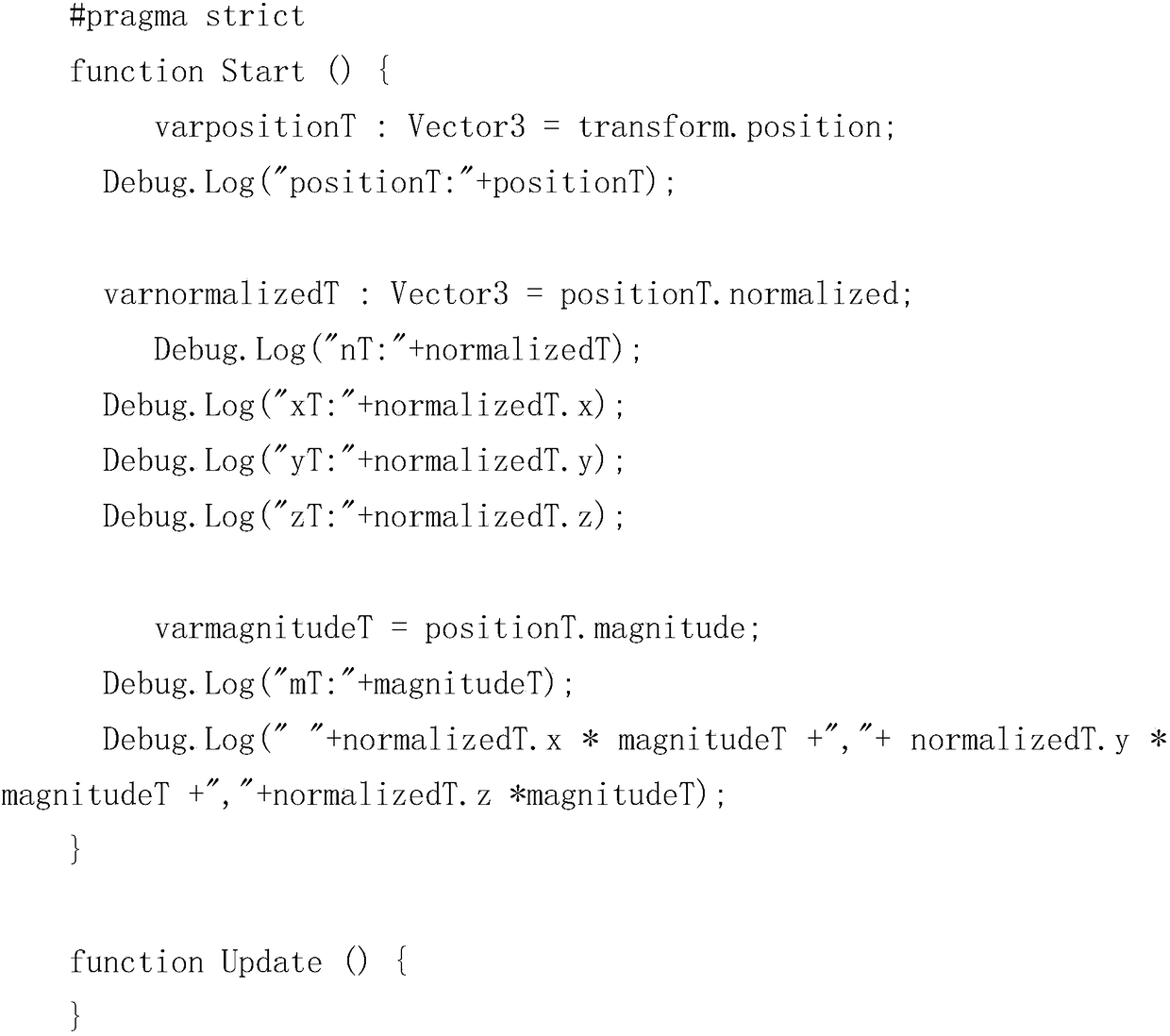Recording method based on augmented reality scene
A technology of augmented reality and recording methods, applied in image memory management, image data processing, instruments, etc., to achieve the effects of improving efficiency, simplifying operations, and improving accuracy
- Summary
- Abstract
- Description
- Claims
- Application Information
AI Technical Summary
Problems solved by technology
Method used
Image
Examples
Embodiment approach
[0051] This embodiment is a more preferred implementation of the recording method based on the augmented reality scene of the present invention, and is also a relatively basic implementation of the technical solution of the present invention. The method includes the following steps:
[0052] Scene recording: Obtain an augmented reality scene that combines real scenes and virtual scenes, and carry out digital and directional identification of the augmented reality scene through three-dimensional vectors;
[0053] Scene segmentation: divide the augmented reality scene into several objects, and perform component processing according to the attributes of the objects;
[0054] Scene saving: Save the componentized processing results of the obtained objects according to their physical information.
[0055] In order to improve the completeness and accuracy of the restoration of the augmented reality scene, in the scene recording step in this embodiment, a method of respectively perfor...
Embodiment 2
[0062] This embodiment is a more preferred implementation of the above-mentioned embodiment 1. The difference between this embodiment and the above-mentioned embodiment 1 is that this embodiment also adds the following steps before the step of scene recording:
[0063] Vector unitization preprocessing: set up the three-dimensional vector coordinates, and unitize the vector coordinates to obtain a pure direction vector with a modulus of 1.
[0064] Through this technical solution, the vector coordinates are unitized before the scene recording step, so that the vector coordinates become a pure direction vector with a modulus equal to 1 for subsequent representation, and there is no need to unitize the vector in subsequent steps. The operation can be simplified and the operation efficiency can be improved.
[0065] In a more specific implementation, the unitization preprocessing can be performed by finding the cos value of two vectors. Specifically, the vector dot product (dot pr...
Embodiment 3
[0069] This embodiment is a more preferred implementation of the above-mentioned embodiment 1. The difference between this embodiment and the above-mentioned embodiment 1 is that the direction marking process in this embodiment also includes a direction adjustment step. Through this step, the direction determination is more accurate. for precision. The specific direction adjustment steps are:
[0070] Two specific objects in the augmented reality are acquired, and the two specific objects may both be virtual objects, both may be actual objects, or may be respectively a virtual object and an actual object. For example, they are respectively marked as virtual object A21; and real object A1. Then, the positions of the two objects, that is, the direction parameters, are respectively identified by the method of the stereo vector in the first embodiment. Next, obtain the relative positional relationship between A21 and A1 respectively, and the method for obtaining the relative pos...
PUM
 Login to View More
Login to View More Abstract
Description
Claims
Application Information
 Login to View More
Login to View More - Generate Ideas
- Intellectual Property
- Life Sciences
- Materials
- Tech Scout
- Unparalleled Data Quality
- Higher Quality Content
- 60% Fewer Hallucinations
Browse by: Latest US Patents, China's latest patents, Technical Efficacy Thesaurus, Application Domain, Technology Topic, Popular Technical Reports.
© 2025 PatSnap. All rights reserved.Legal|Privacy policy|Modern Slavery Act Transparency Statement|Sitemap|About US| Contact US: help@patsnap.com


